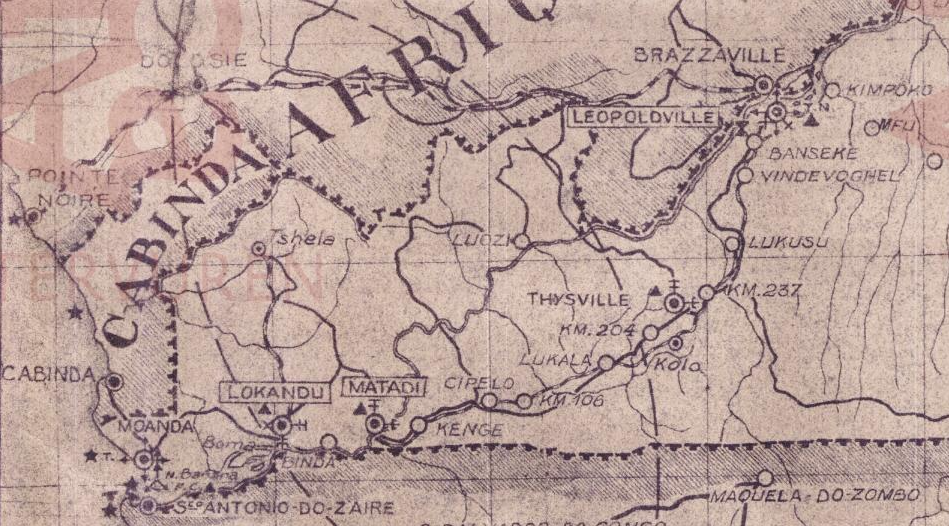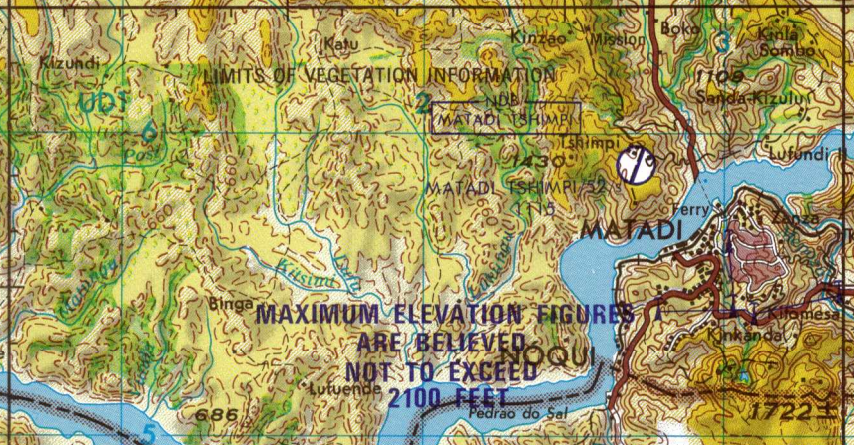Matadi-Tshimpi Airport (FZAM)
Location: Matadi, Kongo Central
Status: Active with regular flights
ICAO Code: FZAM
IATA Code: MAT
Coordinates: -5.795459°, 13.441170°
Matadi is one of the most significant cities in the Democratic Republic of the Congo, primarily due to its strategic location. Founded in 1879 by Henry Morton Stanley, it is the furthest point inland that can be reached by ships traveling up the Congo River from the Atlantic Ocean. This geographic advantage made Matadi the country’s primary port and a crucial hub for international trade.
During the Belgian colonial era, Matadi was connected to Léopoldville (now Kinshasa) by a railway built between 1890 and 1898. The railway’s construction took place under extremely harsh conditions, with no proper equipment, safety measures, or housing for workers. Forced labor was widely used, and nearly 2,000 people lost their lives during the project. In the late 1920s, the railway was upgraded from 750 mm gauge to 1,067 mm and was significantly straightened to improve efficiency.
Following independence in 1960, political instability and economic mismanagement under Mobutu Sese Seko led to a gradual decline in railway operations. Today, the railway remains in use, but only with minimal maintenance and highly infrequent service. Freight transport has almost completely shifted to road transport, with National Road 1 (RN1) providing a fully paved connection between Matadi and Kinshasa, now heavily used by hundreds of trucks daily.
A major milestone in Matadi’s infrastructure was the completion of the Matadi Bridge in 1983. At 722 meters long, it was the longest suspension bridge in Africa for decades and remains, as of 2025, the only bridge spanning the Congo River.
Today, Matadi has a population of approximately 450,000 inhabitants and continues to serve as a key economic center for the Kongo Central province.
Historical Background
The French Wikipedia article on Matadi states that Matadi-Tshimpi Airport was built between 1952 and 1954, with the first recorded landing occurring in 1955, when a Douglas DC-4 arrived at the airfield. However, this timeline is contradicted by the 1947 Carte des Renseignements Aéronautiques, which already marks an airport at Matadi.

This suggests that an older airport existed in Matadi prior to the construction of Matadi-Tshimpi Airport, but no information about its location or name is available in online sources. The addition of “Tshimpi” to the airport’s name further supports this theory, as Tshimpi** is a small village adjacent to the current airport. If Matadi-Tshimpi had been the first airport in the region, the additional designation would likely have been unnecessary.

Current Status (as of 2025)
Matadi-Tshimpi Airport remains active, with frequent but unscheduled flights connecting the city to Kinshasa. The airport features a 1,575-meter-long dirt runway with turning points at both ends, allowing aircraft to reposition for takeoff.
The airport also includes a clearly separated apron and minor terminal facilities. KinAvia operates frequent shuttle flights between Kinshasa N’Dolo Airport and Matadi-Tshimpi Airport, primarily serving business travelers and government officials rather than offering a public commercial service.
